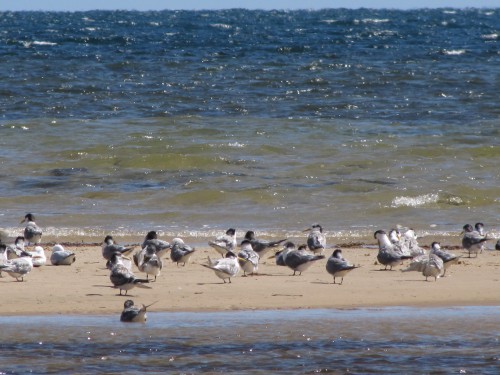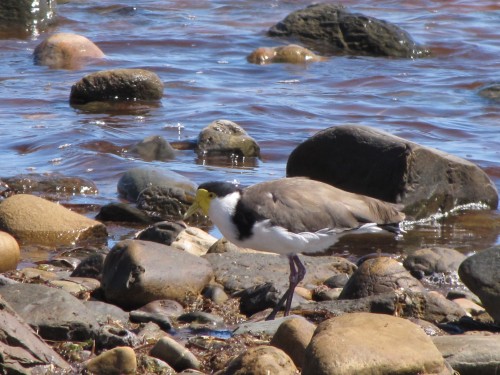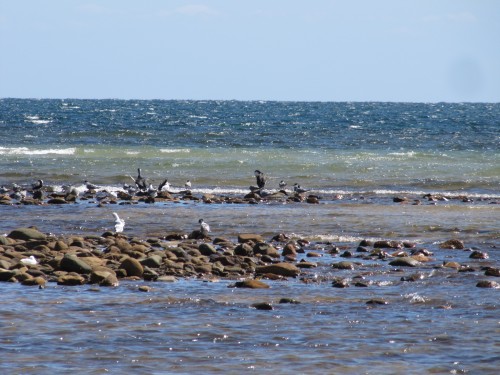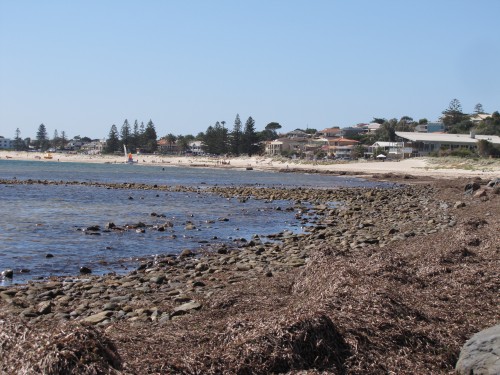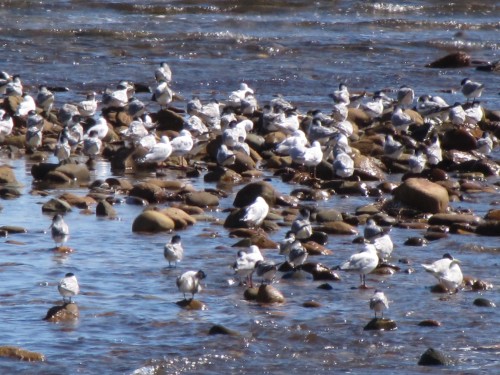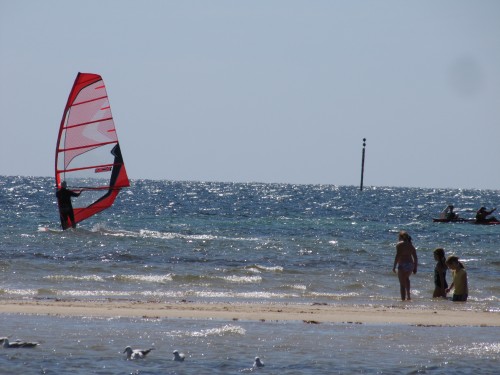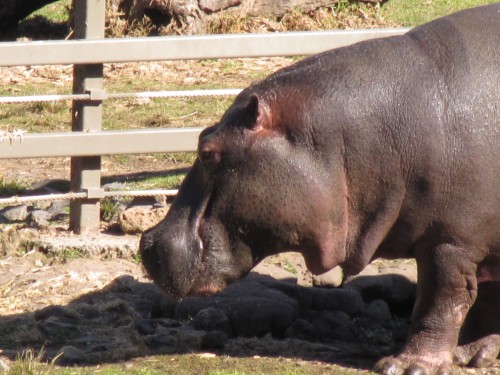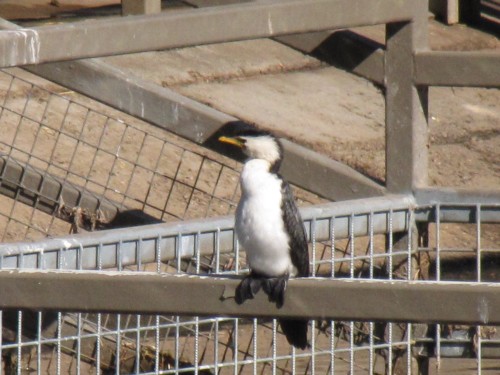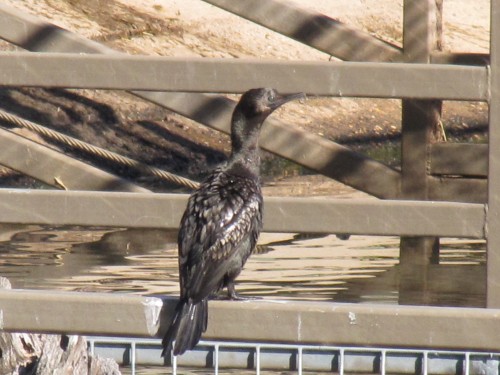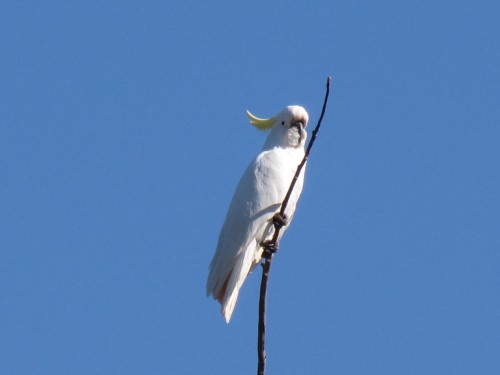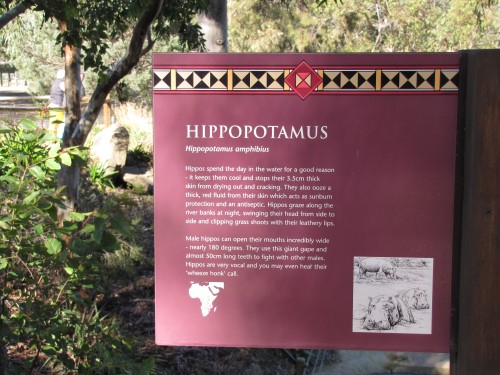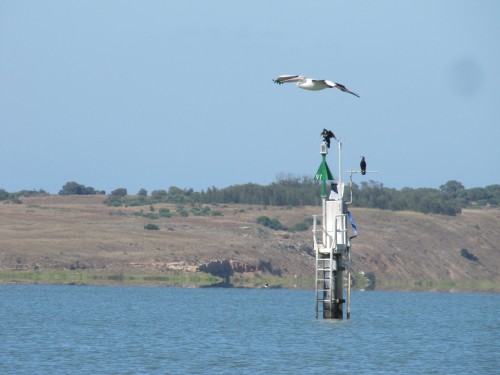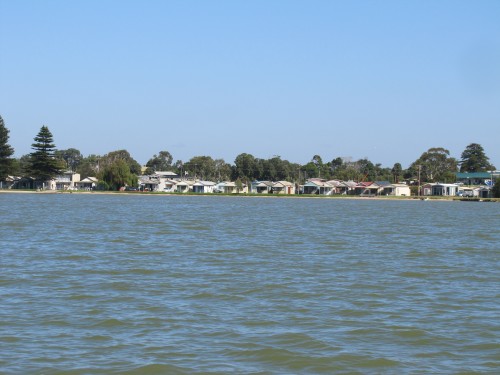More birding at Brighton Beach
In my last post, I wrote about our weekend at Brighton Beach in the southern parts of Adelaide. During our short caravan holiday with a group of friends, we stayed in the Brighton Caravan Park – which is actually in the suburb of Kingston Park. During the weekend, most of my time was occupied chatting with my friends. We spent quite a few hours in our comfortable folding chairs, sitting at the top of the beach watching the passing parade of people walking, running, playing in the water and various water sports. Included in this constantly changing scene were various birds, mostly seabirds.
Probably the most common birds were the Silver Gulls and Crested Terns shown in the photo above. from time to time I would also see immature Pacific Gulls, as well as the occasional Little Pied Cormorant. There was an area of exposed rocky outcrops at low tide, and for much of the weekend, two Masked Lapwings spent many hours foraging for food in the seaweed and rocks. I have shown one of the birds in the photo below. I am amazed at how well camouflaged this bird is against the surrounding rocks.
On the Sunday afternoon, most of our friends went for walks along the beach. I also decided to go for a short stroll, taking photos as scenes presented themselves. The tide was slowly coming in, covering some of the rocky areas and sandbars, providing a smaller area for the roosting birds. I sat on a nearby rock for over half an hour, photographing birds, people, and boats.
Birds of the hippo enclosure
I think that the hippopotamus is a fascinating animal, but I will resist the temptation to write about it. After all, this site is about Australian birds, so… here we go.
The hippo enclosure a the Western Plains Zoo near Dubbo in New South Wales is a huge one – much larger than enclosures you will see in most zoos. It gives the animals plenty of room to move and live in a more natural environment than would otherwise be the case in captivity. As a part of this provision, the hippos in this zoo have a large water feature to enjoy – it’s really a small lake and they must feel really at home.
Being a water feature, it naturally attracts water loving birds. Two which were hard to overlook were the Little Pied Cormorant and the Little Black Cormorant, both shown in photos below. I’m not sure how many fish they would find in the murky water of the hippo lake, but there they were.
As we were watching the cormorants and the hippos I noticed a Sulphur-crested Cockatoo perched high in the branches of a nearby tree. I’m not sure if the cockatoo was checking out the availability of water from the hippo lake, or looking for a hollow to make a nest. Perhaps it was on guard, ready to warn the flock feeding on the ground of approaching danger.
Boat trip on Lake Alexandrina
In my last post here I wrote about a recent boat trip on Lake Alexandrina just south of my home in Murray Bridge. While this boat trip was mainly recreational in purpose, I cannot help but notice birds along the way whether I am driving in a car, travelling on a bus or train, walking or boating.
While travelling at 40kph (25mph) across the water is not conducive to birding – the boat’s engine scares many birds away – some birds are obviously very used to speeding boats on this stretch of water. Silver Gulls followed the wake of the boat as shown in my last post, Australian Pelicans kept fishing less than 40 metres from our racing vessel, cormorants kept bobbing up out of the water here and there and flocks of ducks flew over the lake heading somewhere else to feed.
The photo above shows one of many navigation posts seen at intervals across the lake. The depth of the water varies from a few centimetres through to about 4 – 5 metres. Some sections are far too shallow for safe boating – as we found out later in the day. I deliberately captured both the pelican and two Little Black Cormorants in the photo. Little Black and Little Pied are the two dominant species of cormorant in the lakes and river system of the Lower Murray River.
The photo below shows a view of the lakeside town of Milang. I can thoroughly recommend the little bakery in town, and our friends tell us that the fish and chip shop is also worth patronising.
Birding around Mannum, South Australia part 3
A few weeks ago I spent an enjoyable afternoon birding in and around Mannum, about 20 minutes drive north of home. It was a beautiful spring day with bright clear sky, a gentle breeze and plenty of birds. I sat for a while in the Mary Ann Reserve on the river front, watching and photographing the birds on, over and near the Murray River.
I was rather puzzled by the behaviour of several species of birds in and over the water. Several Little Pied Cormorants and Little Black Cormorants were swimming around in the one spot about 30 metres out into the water. I can only assume they were fishing but I didn’t actually see one catch a fish. Over head several White-necked Herons and one Great Egret flew around low over the water sometimes almost landing and snapping at the cormorants in the water. A Silver Gull even joined in, harassing the heron as they flew (see photo below).
Bogey bird
The White-necked Heron was an interesting sighting for me. It’s been one of my bogey birds over the last 25 years. I went from 1987 to 2001 without seeing a single one of them. Then only one – with another 6 year wait to see another one! Unbelievable. In fact in more than 35 years of birding I’ve only ever seen this species about 20 times. Then on this day at Mannum I saw 4 all flying around in close proximity. Unreal.
